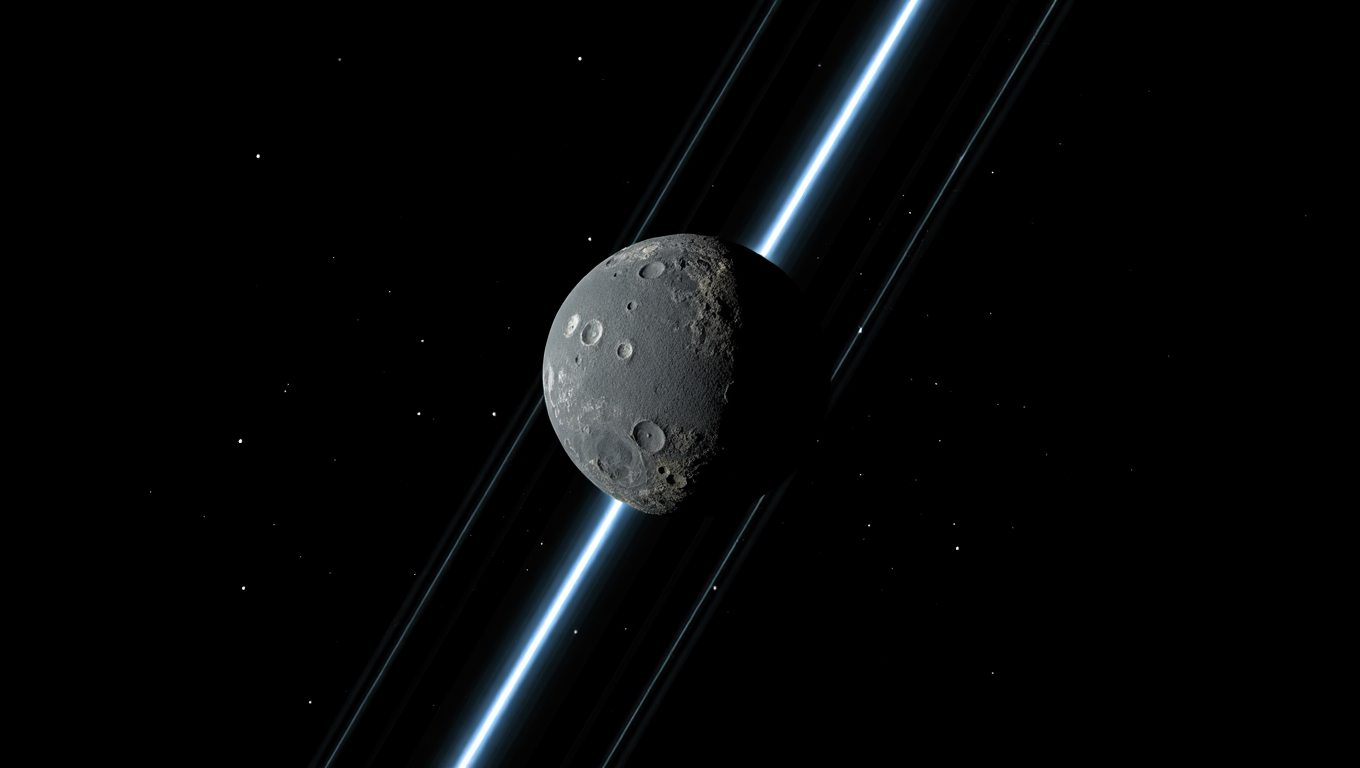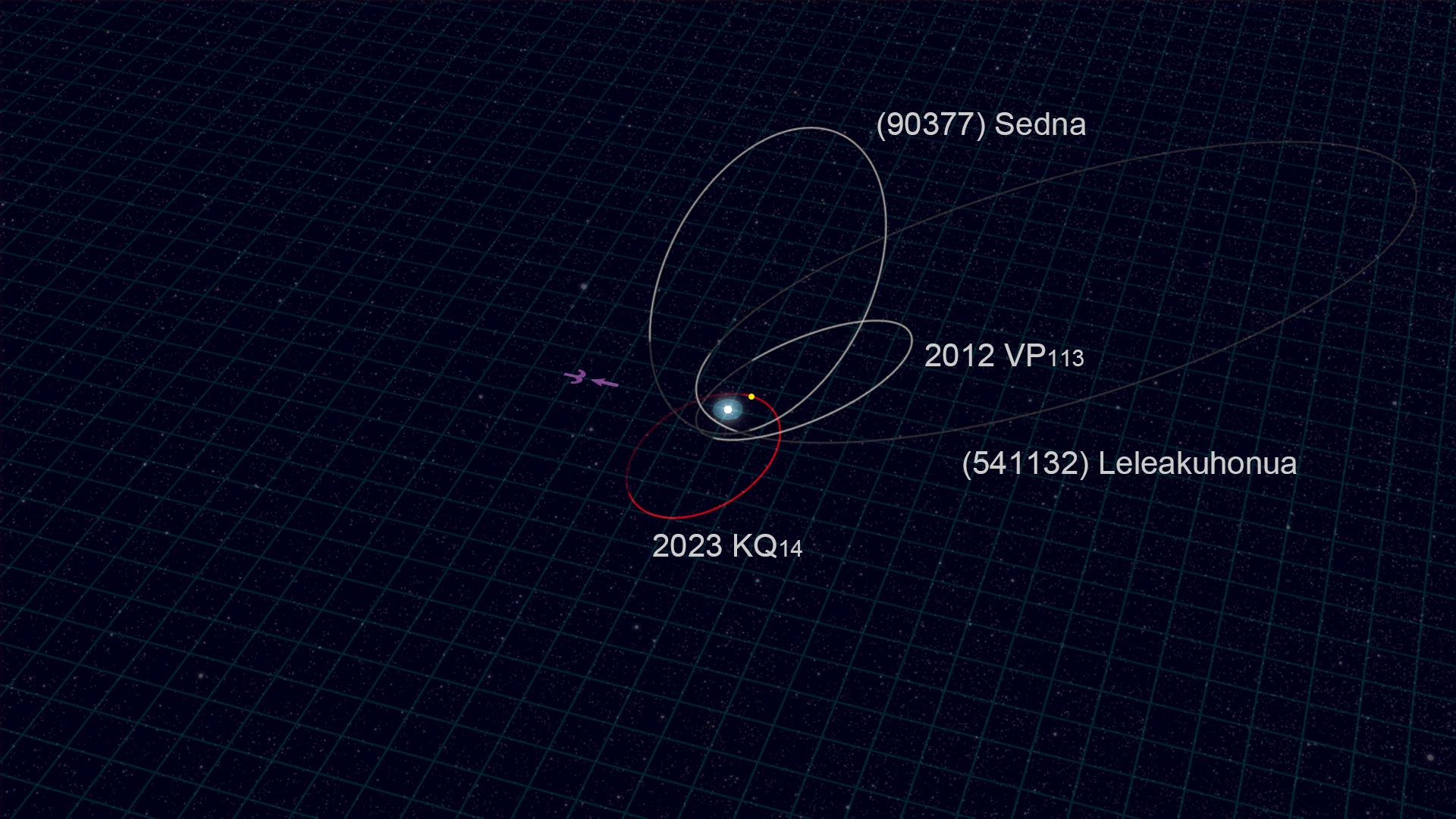🔭 Hidden forces at the edge of the Solar System?
Follow us on Google News (click on ☆)

The Subaru telescope in Hawaii made it possible to spot this rare object. Ammonite belongs to a small family called sednoids, which includes only three other known members. It is so distant that large planets like Neptune have almost no influence on it.
Scientists used simulations to study its behavior. The result: its orbit has remained stable since the Solar System's formation. This surprises researchers because it doesn't match current models, which predict more movement or disturbances in this remote region.
Ammonite also doesn't follow the expected trajectories if the Planet Nine hypothesis (an as-yet-unconfirmed planet) were correct. This could indicate that the forces acting at the edge of the Solar System are not what we thought.

Ammonite's orbit (in red) compared to other sednoids (in white).
Credit: NAOJ
For astronomers, this object could provide valuable clues about the Solar System's earliest moments. Studying its trajectory and composition could help better understand how planets formed and moved over time.
What is a sednoid?
A sednoid is an object located very far from the Sun, much farther than Neptune. It follows a highly elongated orbit and remains largely unaffected by other planets.
The first sednoid, Sedna, was discovered in 2003. This type of object is rare because it is small, dark, and extremely distant, making it difficult to detect.
Sednoids interest astronomers greatly because they may have been displaced by ancient events, such as the passage of a nearby star or the existence of a now-vanished planet. They might also originate from other regions of the Solar System.
Why is Ammonite important?
Ammonite is considered a cosmic fossil. It has barely changed since the Solar System's beginnings. Its stable trajectory shows it has been minimally disturbed, unlike other objects.
By studying this type of object, scientists can travel back in time. This allows them to better understand the conditions that prevailed 4.5 billion years ago, when the Sun and planets were forming.
These discoveries also help test current theories, propose new ones, and gain a more complete picture of our cosmic neighborhood's formation.